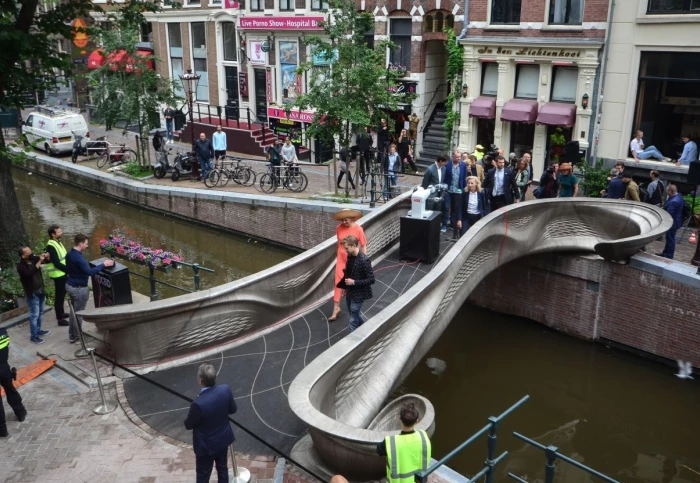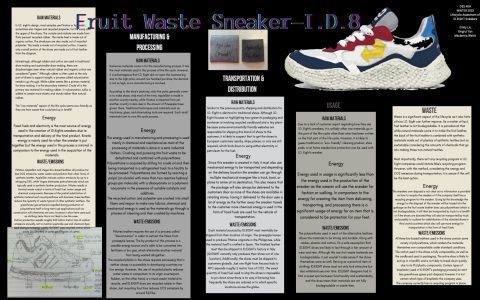Amsterdam's 3D-printed concrete bridge demonstrates significant eco-friendly advancements:
Novel Circular Material
The bridge utilizes specially formulated concrete reinforced with recycled plastic aggregates from post-consumer waste, reducing virgin resource consumption.
Radically Reduced Waste
Additive manufacturing enabled near-zero material waste during production, contrasting sharply with traditional subtractive construction methods requiring excess material.

Optimized Structural Efficiency
- Topology optimization algorithms precisely calculated material distribution
- Resulting design uses less concrete overall while meeting structural requirements
Embedded Sensor Network
Integrated sensors continuously monitor structural performance and material behavior throughout its lifecycle, enabling predictive maintenance and validating eco-design principles.
Localized Digital Fabrication
Printed on-site using industrial robotic arms, eliminating carbon-intensive transportation of prefabricated components and reducing construction traffic impacts.
This project establishes a replicable framework for resource-efficient infrastructure where material use aligns precisely with structural demands.






